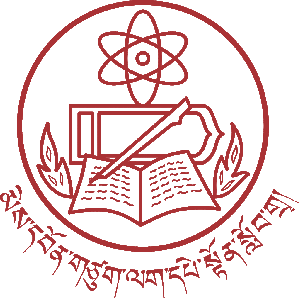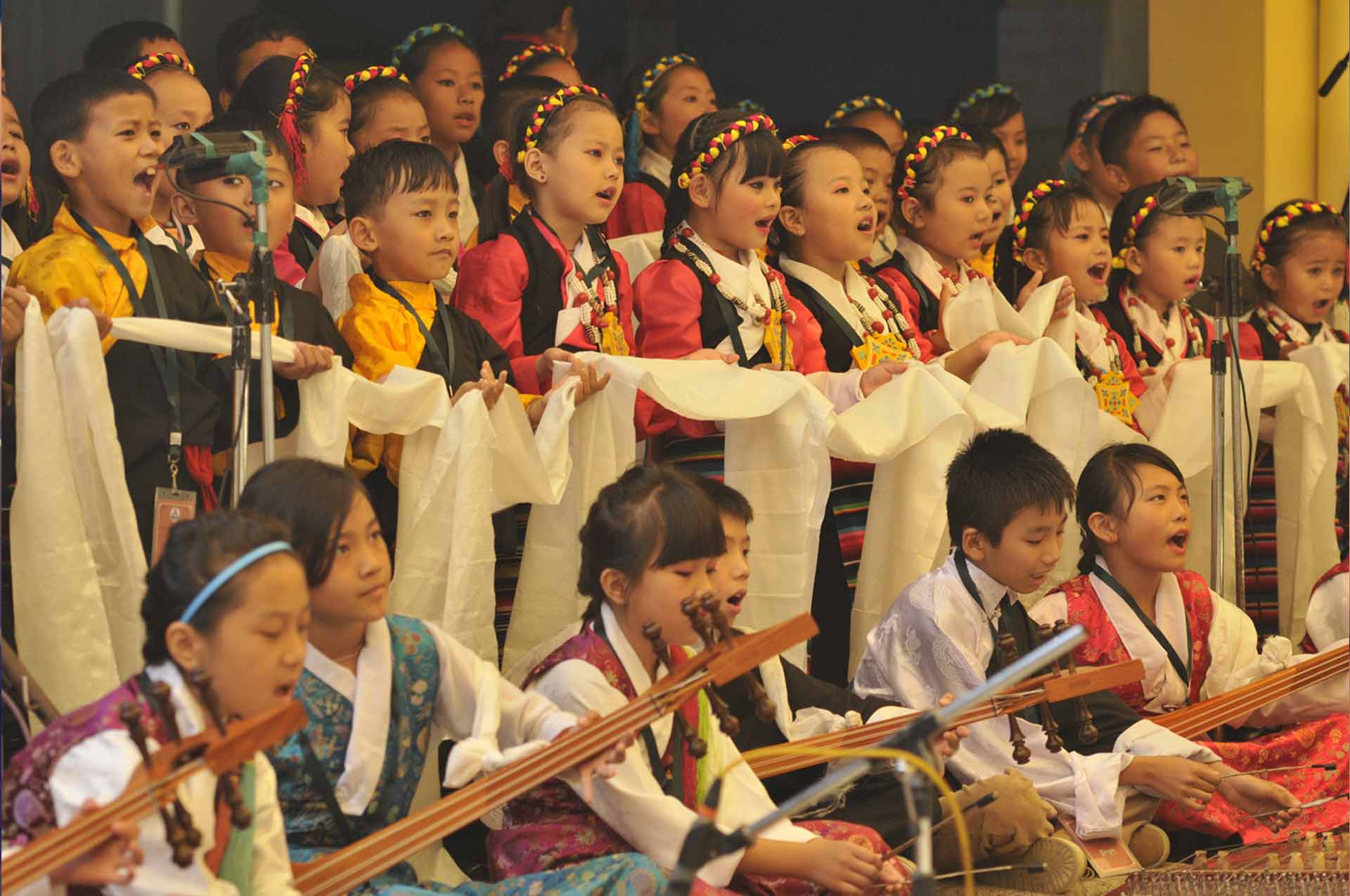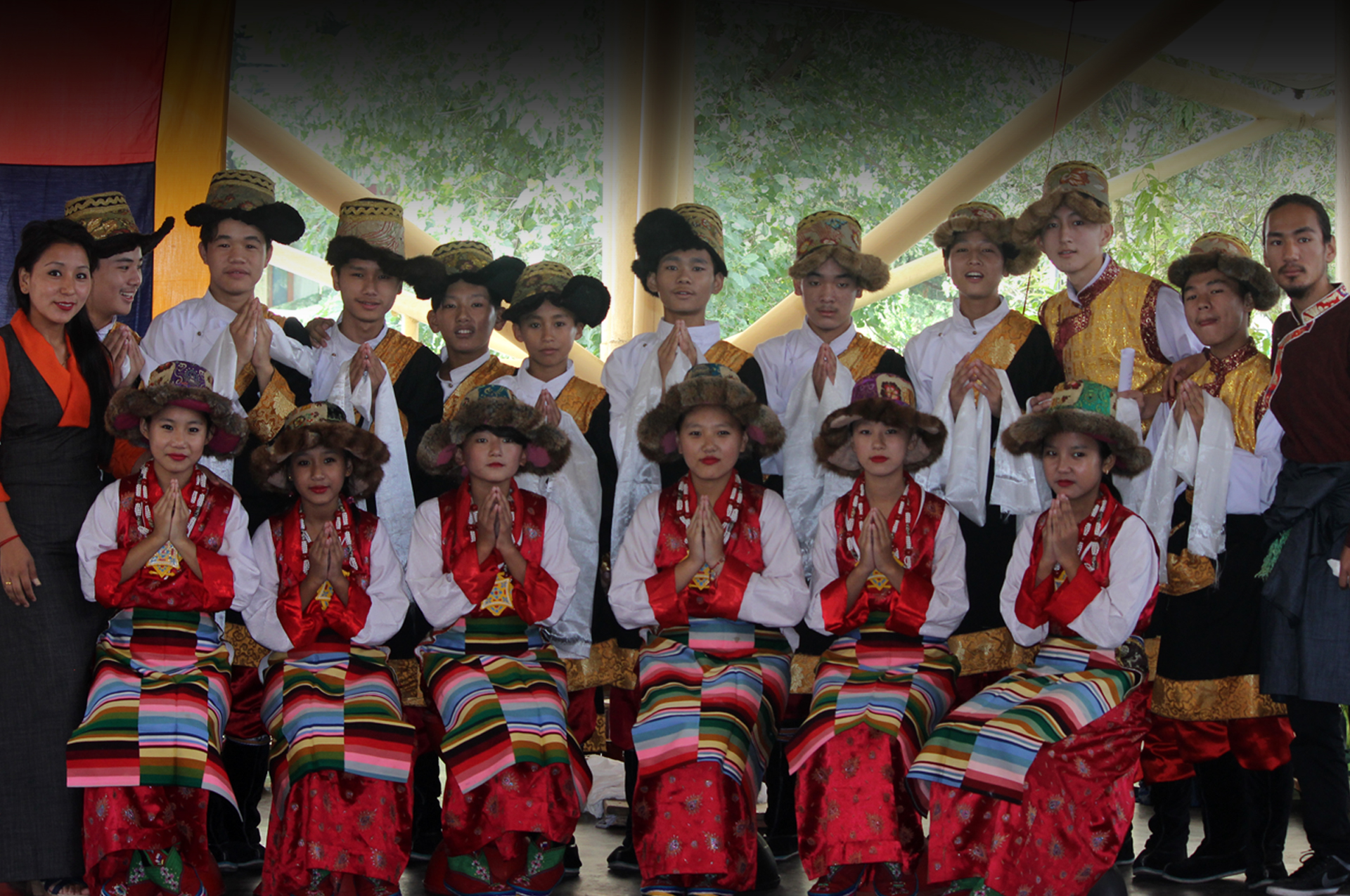School Profile and Historical Background
The Department of Education of the CTA has established this school as a model school for the implementation of Basic Education Policy for Tibetans in exile on 10th October, 2005. The school endeavors to follow and practise the policy not only for teaching-learning purposes but also to give holistic education to the children. As stated in the BEP a lot of emphasis is given on imparting of value education and traditional education. To have a firm foundation of Tibetan language, all the subjects are taught in Tibetan right from Pre-primary to class III. Teaching of English as a second language and Hindi as third language starts in class IV and class VI, respectively. Active participation of children in the classroom proceeding is encouraged to ensure child-centric teaching-learning in the classroom. This helps students to express their views without fear and also helps in full flowering of inherent qualities of the children. Teaching of Tibetan culture and tradition helps them to have good grasp of their own culture and identity, which will enable them also to appreciate the culture of other people.
The school was inaugurated by Kalon Tripa Prof. Samdong Rinpoche. The inaugural ceremony was attended by all four the Kalons, members of Tibetan Parliament in Exile and Tibetan Supreme Justice Commission, the Secretary of the DOE and heads of Tibetan schools in and around Dharamsala. In his inaugural speech Kalon Tripa congratulated the Department of Education (DOE) for the successful establishment of the first Petoen school based on the Basic Education Policy, and said that both modern education and our traditional education are important, yet the traditional education is the ultimate choice for the preservation of our culture and Tibetan identity.
Today, five years after its establishment, the school has been able to do well to win the goodwill of almost all the visitors to the school. The number of parents who wants to send their wards to the school has increased steadily over the years. The progress of the children in different components of the school education lives up to the expectation of the DOE and the parents.
Historical Background
The final draft of Basic Education Policy (BEP) was tabled in the Tibetan Parliament for its approval in September 2004 by the 12th Kashag of the Tibetan Government in Exile. The parliament gave its approval after making a few minor changes in the policy. It was a realization of long cherished desire of the Tibetan people to have an education system that would be more suitable and capable of fulfilling the ultimate desire of the Tibetan people. It also marked a significant shift in the way education in Tibetan schools has to be imparted. Emphasis has to be on preservation of Tibetan culture and traditions as well as realization of inherent talents of the children. The BEP is also in consistent with the Charter of the Tibetan People in Exile, which was formulated in 1991, and had stated “towards enhancing the imparting of education, an ideal education policy meeting the real basic needs of Tibet shall be formulated”.
The drafting of the final version of the document was preceded by a series of discussion among educationists of different traditions and nationalities, meetings held to discuss the issues threadbare, suggestions were sought from different quarters and the policy draft was made available on internet to facilitate the general public to say in its preparation. Notwithstanding the support the document received from all concerned, it was decided in the meeting of Tibetan scholars and administrative personnel that a model school would be started by the Department of Education (DOE), wherein the BEP would be implemented to serve it as a model for other schools for effective implementation of the BEP in future. Hence, Mewoen Tsuglak Peteon School was established in October 2005 at lower Dharamsala as a model school for the Tibetan people in exile.





